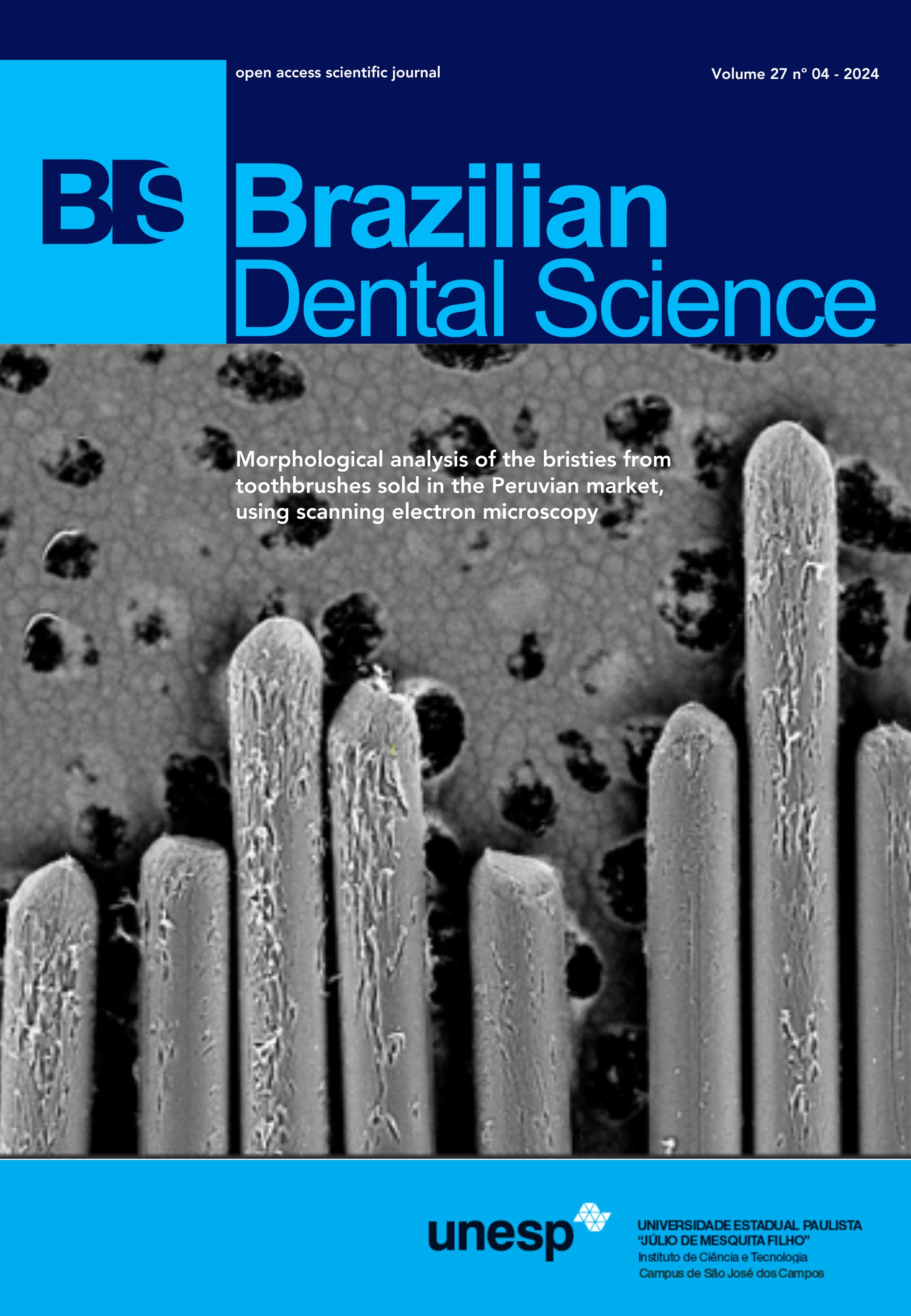In vitro evaluation of plant-based storage media compared to Hanks Balanced Salt Solution for avulsed teeth: a systematic review
DOI:
https://doi.org/10.4322/bds.2024.e4556Abstract
Background: Tooth avulsion, complete loss of tooth from trauma, affects 1-11% of permanent teeth injuries, often in children aged 7-10. Diagnosis involves examining severed vascular and nerve supply, leading to pulp death and periodontal ligament (PDL) damage. Successful replantation depends on viable PDL cells. Immediate replantation is preferred to minimize PDL compromise. Alternatively, the tooth can be taken to a dental professional, requiring careful storage to maintain PDL cell viability. Natural products are explored for storage due to potential benefits. This study reviews plant effects on avulsed tooth tissue restoration, assessing if plant-based preservation aids PDL re-establishment post-replantation. Objective: The aim is to systematically review literature on herbal storage mediums compared to Hanks Balanced Salt Solution (HBSS) for avulsed permanent teeth using in-vitro studies. Design: Relevant literature from PubMed, Google Scholar, Web of Science, Cochrane, and Scopus was reviewed. Only laboratory-based studies on PDL cells from adult permanent teeth were included. From 692 initial articles, 19 were selected. RoB 2 was used for quality assessment. Results: Of 692 articles, 19 were selected. Green tea extract was most recommended, followed by Morinda citrifolia and HBSS. Propolis and coconut water were also frequently recommended. Recommendations were based on PDL cell viability, availability, cost, and shelf life. Conclusion: Plant-based preservation has positive effects on PDL cell viability in avulsed teeth. Further research is needed to validate clinical impacts and explore regenerative treatments.
KEYWORDS
Dental avulsion; HBSS; PDL cell viability; Plant derivatives; Transport media.
Downloads
Published
How to Cite
Issue
Section
License
Brazilian Dental Science uses the Creative Commons (CC-BY 4.0) license, thus preserving the integrity of articles in an open access environment. The journal allows the author to retain publishing rights without restrictions.
=================




























